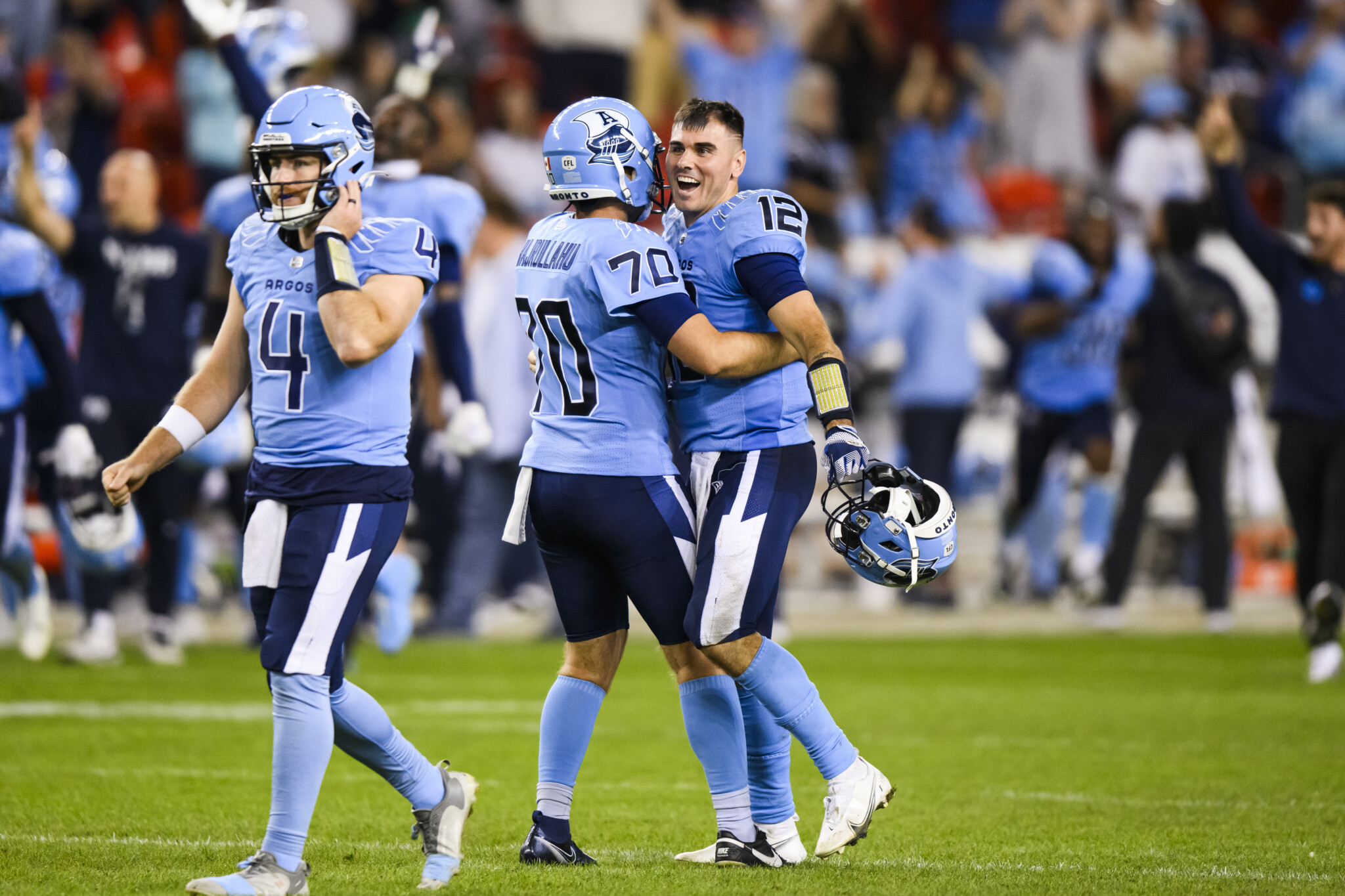As Labour Day approaches, I prepare like any other red-blooded, mid-millennial across Canada does. I get ready for the final long weekend of the summer. Plan outdoor activities for the kids. Pick up steaks for the barbeque and beer for the cooler. And of course, I plan to watch some football. But sadly, that won’t be Canadian football.
The patriot in me wishes I could enjoy the Canadian adaptation of football that my father grew up on, and his father before that. Alas, I’ve been spoiled by the American game. This long weekend, I am looking forward to week one of the college football schedule, which has increasingly become a tradition for football-loving Canadians of my vintage.
I am a proud Canadian—really. And it pains me that the Canadian Football League’s Labour Day Classic isn’t part of my young family’s routine, but you need look no farther than last week’s walk-off rouge to know why.
What is a walk-off rouge? Great question. The rouge is a single-point play in Canadian football occurring when the ball is place-kicked or punted through the back of the opponent’s endzone. In this case, with the Saskatchewan Roughriders and the Toronto Argonauts tied at 19-19 with zero seconds remaining on the clock, Toronto won the game 20-19 on a missed field goal. The most depressing part was not just the participation point for failing to convert the field goal, it was the way in which the Argos celebrated this failure. How Canadian.
It’s not charming, it’s lame.
This is why we are long overdue for a full harmonization of CFL rules with American football rules. Does it have to be identical? No, but for the sake of the CFL’s survival, it must be closer to the NFL product millions of young Canadians tune into on Sunday afternoons every fall. I can accept some nuanced differences, like the differences between the NFL and NCAA games. Clocks stopping on first downs, one foot in bounds to complete a pass—if the CFL wants to be an offence-inclined league, that is as far as they need to go.
The longer/wider field, 12 players per side, three downs per possession, two timeouts, the “rouge,” the goalposts in play—all must go.
For decades the CFL has been declining in domestic popularity. According to a 2023 Angus Reid poll, more Canadians closely follow the NFL than the CFL. It’s particularly striking when you look at the 18-34 year old demographic. According to the poll, 38 percent of these young Canadians follow the CFL, while 50 percent follow the NFL, the most-followed professional sports league in Canada behind the NHL. The longer in tooth Canadians are, the more this disparity shrinks, but we know where this trend is going as the 35 and under cohort gets older and raises NFL fans of their own.
To put it bluntly, given that younger Canadian football fans prefer the NFL to the CFL, it would be wise for the CFL to mirror the rules and play style of the NFL for this reason alone. But I think there is a bigger play here for the future viability of the CFL.
Capture the American audience.
No, not by expanding our game down there (shoutout to the Las Vegas Posse and the Shreveport Pirates). Let’s not be afraid to let the tentacles of the greatest football empire known to mankind spread up here. It’s so uniquely Canadian to resist American influence, talent, consumers, and dollars from seeping into our cultural institutions—with the resistance to conform the CFL to American standards, that we might as well be calling it the CRTC-FL—but hear me out.
I’m talking about a full harmonization of rules so that, in effect, the CFL becomes a breeding ground for NFL talent.
In the CFL’s 1970s-80s heyday, its best and most talented were graduating to the NFL: Joe Theismann; Warren Moon; Doug Flutie. Today, the CFL has become a halfway house for NFL dropouts: Ricky Williams; Johnny Manziel; “Swag” Kelly. It’s time we return the CFL to respectability by creating fertile grounds to develop football players, ascending them to the highest peaks of the game, unlike the current rouge-tainted last-stop wasteland.

Toronto Argonauts kicker Lirim Hajrullahu (70) celebrates with quarterback Chad Kelly (12) Hajrullahu after a missed field goal that resulted in a single point to defeat the Saskatchewan Roughriders 20-19 in CFL action in Toronto, August 22, 2024. Christopher Katsarov/The Canadian Press.
Every season, successful NCAA quarterbacks go undrafted from the NFL and either sign with an NFL practice squad or quit the game to become gym teachers in their hometowns. The ones in between those two options can now look to an alternative stateside with the relaunched XFL and the upstart USFL merging into the UFL. Not to mention that the NFL has doubled the maximum size of practice squads over the last 10 years, from eight to 17, keeping more American talent from the CFL.
This is not your grandfather’s era, in which heading up north was a logical next step for young Americans in search of an NFL career. The CFL should be doing everything in its power to regain that standing.
For those currently watching HBO’s Hard Knocks, you’ll find a perfect example in the Chicago Bears’ fourth-string undrafted quarterback, Austin Reed. Reed had a prolific four-year college career at West Florida and Western Kentucky (38-15 record, 14,488 passing yards, 138 passing touchdowns, 20 rushing touchdowns, 36 interceptions). Yet with doubts about the scheme he played in college, he went undrafted to the NFL this past spring, only to be brought into Chicago’s training camp on a $5,000 signing bonus. Despite his best effort, he was cut by the Bears as roster limits loomed, likely to be signed to an NFL practice squad.
Wouldn’t we be better for it if players like Reed elected to go to the CFL for a year after college to play in a pro-style offence and showcase NFL-compatible skills?
Not only would this potentially attract eyes from passionate college fanbases (like that of the Western Kentucky Hilltoppers), hoping to see their guy succeed, but it could also draw eyes from fans of beleaguered NFL franchises in perpetual search of a new quarterback or other yet-to-breakout talent. But perhaps most importantly, it would also hold the attention of Canadian football fans more inclined to the American game.
Unfortunately, with the rules the way they currently are, the CFL is no longer seen as a path to the NFL. It’s too different, too foreign.
And what’s stopping the CFL from harmonizing rules with the NFL? Well, I’m afraid it’s partially explained by a northern habit of little brother syndrome. We want to be so distinct from our American siblings that we would rather the CFL slowly fade into deeper obscurity than make the CFL a minor league NFL. Canadian opponents of a continental set of football rules and field dimensions may say they are nostalgic for the football they watched with their dad who watched it with his dad who watched it with his dad. I am predisposed to maintaining generational sports traditions, but I fear without adaptation the CFL will cease to exist in a generation or two.
The league must adapt to the dominant form of the game that younger fans consume or be wiped out entirely. The first step is no more game-winning missed field goals.








